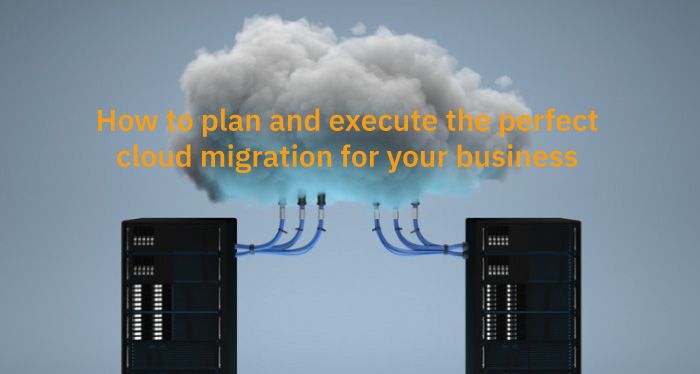How to plan and execute the perfect cloud migration for your business
Views, News & more

Cloud migration is one of the biggest trends in business today, with organizations of all sizes and types migrating their operations to the cloud at an unprecedented and rapidly accelerating rate.
With benefits such as cost savings, added value, increased security, flexibility and scalability, it’s no wonder that businesses are migrating in such great numbers.
If you’re considering migrating your company to the cloud, it’s important to know the various strategies and types of cloud infrastructure on offer, in order to make the best decision for your business and ensure that you unlock the benefits the cloud has to offer.
Overall, a successful migration strategy involves three different processes:
-
choosing the type of cloud your business needs;
-
choosing your migration strategy; and
-
undertaking your migration.
Choosing your type of cloud:
There are three different kinds of cloud that an organization can choose to migrate to, each with its own benefits and features. The type of cloud infrastructure you should choose to migrate to will depend on your business’ individual needs.
- Public cloud – With a public cloud infrastructure, your business’ applications and data will be wholly hosted by your chosen cloud provider. The core benefit of a public cloud infrastructure if that your employees will be able to access whatever applications they need from wherever they are, providing they have an internet connection.
This could prove especially useful for businesses that have seen large numbers of employees convert, temporarily or permanently, to remote work during the COVID-19 pandemic.
- Private cloud – With a private cloud solution, all of your business’ data, applications, resources and processes will be hosted on an infrastructure that is operated and maintained by your cloud provider, but dedicated exclusively to your business.
A private cloud infrastructure may come with a higher price tag, but is particularly suited for larger companies, companies that deal with a high volume of sensitive data or companies that need to optimise security for critical processes.
- Hybrid cloud – A hybrid cloud approach, as the name suggests, combines elements of private and public cloud. In brief, this is a flexible solution that enables the infrastructure to switch between private cloud during periods of low demand and then move to the public cloud should demand run high.
This flexibility offers companies the benefits of both public and private cloud, enabling them to store sensitive data or critical applications that need to be securely hosted in the private cloud, while reducing costs by running workloads and hosting less-sensitive data in the public cloud.
Choosing a migration strategy:
Once you’ve identified what type of cloud infrastructure you’re going to migrate to, it’s time to begin planning your migration by settling on your migration strategy or strategies. When it comes to cloud migration, there are numerous different ways that you can move your legacy applications and processes into your chosen cloud infrastructure.
- Lift & Shift – Perhaps the most basic migration approach, lift and shift involves an organisation moving its applications, as they are, from the original infrastructure into the cloud.
This process is often known as “rehosting” and is particularly useful for a business undertaking a large legacy migration within a short timeframe. A key advantage of this process is that it can be largely automated, but applications may require optimisation post-migration.
- Refactoring – Otherwise known as replatforming, this involves re-using the existing code and frameworks of an application, but updating it to run on a platform-as-a-service (rather than infrastructure-as-a-service) platform.
Generally speaking, refactoring simply sees an application be slightly optimised to run in the cloud, without the core infrastructure being altered.
- Revising – With a revise approach, the company undergoing the migration will partially modify or expand an application’s code base before transferring and deploying it in its new cloud infrastructure.
- Rebuilding – This sees applications rewritten completely using the provider’s cloud platform. While quite a laborious process, rebuilding can help companies to unlock the benefits of modern technologies and features for their legacy applications.
- Retirement – As the name suggests, retirement involves the company identifying applications that it no longer needs and retiring them before it moves its processes to the cloud.
Rather than being a migration strategy on its own, this is an approach that any company undergoing a cloud migration can take in order save money, decrease the attack surface it needs to defend and refocus its IT team on core processes.
- Replacement – This involves a business moving away from an original application to a new product. Generally, in a cloud migration, this sees the company move from an application it has purchased or developed itself to an SaaS application from its cloud provider.
The cloud migration process
Aside from the type of cloud your business is moving to and the strategies it will use to get there, it will also be critical to undertake the following steps in the lead up to and during your migration.
- Assess – The first step in any migration should be to undertake a comprehensive assessment and inventory of the firm’s existing data centre. This will provide a clear view of the resources that the company currently requires to run its services.
This process is also useful in determining any applications that aren’t critical to the business and can be retired during the migration.
Crucially, assessing your current situation will be the determining factor in whether migrating to the cloud makes financial sense for your firm and, if it does, which provider or type of infrastructure best suits your needs.
- Plan – Once you’re decided, the next step is to begin planning the migration process itself. Essentially, this involves assessing which applications need to be changed or updated and how best to go about this.
Planning also involves thinking about how your business will operate once hosted in the cloud. You’ll need to consider the different levels of access that different employees will have, how the cloud infrastructure will be constructed and how the different areas of the infrastructure will communicate.
- Execute – Once your company is ready to move to the cloud, it’s vital to ensure that any modifications to applications are completed and that the cloud environment itself is set up.
When this is in place, your cloud provider will typically offer tools to assist in your migration. For example, if you wish to avoid the risk of human error, your provider can arrange automated processes to aid in the migration.
- Optimise – If your migration was time-critical, then you may have opted for a lift & shift or rebuild approach. If so, then it’s possible that, once you’ve migrated you need to take some time to modify these applications so that they are optimised for the cloud and can fully benefit from what your cloud infrastructure has to offer.
Get in touch
020 7847 4510
We may process your personal information in order to send you information you request, measure and improve our marketing campaigns, and further our legitimate interests. For further details, see our privacy policy.
Contact us
-
- Head Office:
- hSo, 50 Leman Street, London, E1 8HQ
- Switchboard:
- 020 7847 4500
- Support (24x7):
- 0333 200 3337
- support@hso.co.uk
- Marketing & Sales:
- 020 7847 4510
- info@hso.co.uk

















